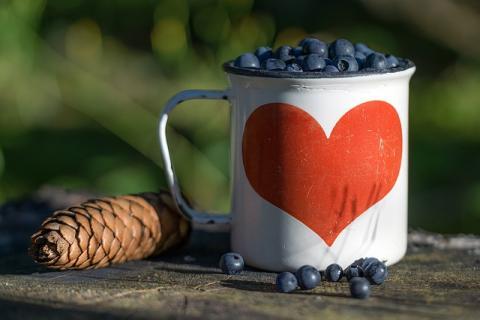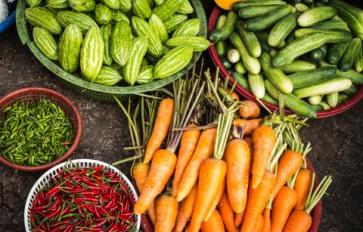
Food can be found everywhere in nature, you just have to know what exactly it is you’re looking for.
This short series will break down foraging by the seasons. Every season brings about something new to look for. Although Spring, Summer, and Autumn bring about the biggest bounties, Winter has some to offer as well. Depending on the climate region you live in, there may be a bounty of food for you all year ‘round.
Autumn
This is one of my favorite seasons for many reasons, one of them being all of the nuts. Your main sources of foraged food will be nuts, fruits, roots, and tubers this time of year. Many of the fruit-bearing trees and shrubs are ready for harvesting and the nuts should have already been collected, depending on where you live. Shrubs will need one full growing season to mature before the flowers will make the seeds that make fruits. When it comes to the nut trees, they take turns. For instance, one year the hickory tree might produce a huge harvest and then within the next year or two you will see a decrease in the hickory and an increase of another nut.
Autumn is a really great time to get out there and locate, map, and mark all of the native wild edibles in the area you forage. This allows you to keep a better eye on the production, as well as keep you from over or under harvesting. You always want to be sure you leave some behind so that more food will grow.
Jerusalem Artichokes (Helianthus tuberosus) – This plant is a relative of the Sunflower, although it isn’t seeds you’re after. It is the tubers that grow underground. There are no poisonous look-a-likes to worry about. It is best to identify this plant in the summer months when the plants bear several yellow flower heads blooming from each stalk. The best time to dig the tubers is from the first frost of the year and all throughout winter. The tubers can actually be harvested and eaten every season except the summer, when they are still a mushy consistency.
Jerusalem artichokes have similar nutritional properties as potatoes. The carbohydrates are mostly inulin, which is great for a low-starch or low-carb diet. It is also something healthy for people who have diabetes. You can peel the tubers and eat them raw in a salad, cook them in a stir-fry, soup, and stews, and even fry them like potato chips.
Cattails (Typha latifolia) – Cattails grow everywhere in the United States as long as there is a pond or small body of water. They may look like corn-dogs but they taste nothing like them. There are several wild iris species that are poisonous look-a-likes. It is the stalk and the bulb that can be poisonous, and that’s why it’s important to identify all of your plants before digging. You want to harvest where there are many old stalks thriving. You can harvest cattails in the summer, autumn, and winter. You can eat the roots, shoots, bulbs and seeds. The pollen that is present during the mid-summer months can be harvested and used like flour. You can learn how to eat cattails here.
Arrowhead/Duck Potato/Wapato (Sagittaria latifolia) – This plant grows all over the U.S., except the very tips of the southern states. There are several species of arrowhead, all containing arrowhead leaves. Arrowhead grows in ponds and can be found on lakeshores, streams, bogs, meadows and anywhere that stays very wet. It is the edible tubers you will be after and more often than not, they are in the water. Some people use their feet to find the potato like tubers and then loosen them from the dirt -- the Wapato will float to the top and are easy to get from that point. You want to collect them from late Summer into early Spring.
You can eat them raw but they are not very tasty that way. It’s best to boil or bake them like a potato -- the same spices work well too. Toss them in a soup or stew for a nice touch.
There are tons of different kinds of food to be found in nature. These three items are easy to identify and make great food. You can also find different tasty berries, grapes, persimmons, and chickweed. When you go out foraging be sure to bring a good book for identification and learn the plant’s look-a-likes. It is always better to be safe than sorry. Look for part 2 next week to learn about some of the basics to winter foraging.








